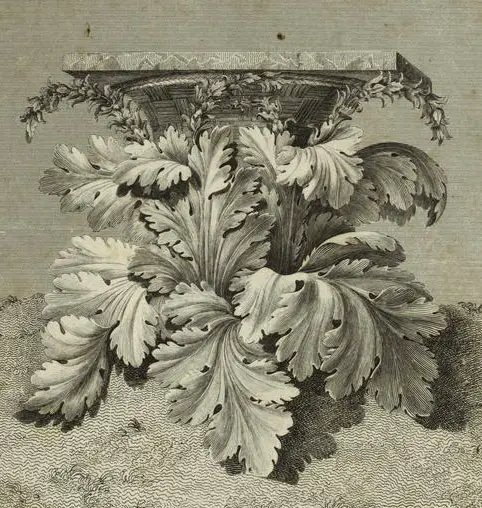Legend has it that a famous Greek architect was walking by a graveyard in Corinth one day in the ancient world. The grave of a young girl had been marked by a basket placed upon the soil and weighted down with a flat ceramic tile on top. No doubt it once held grave offerings to the gods of the underworld.
From beneath it sprung a native Mediterranean plant, Acanthus mollis. It was forced to grow outward and then up before it could break through the soil. When it did the flat lobed leaves surrounded the basket with a nest of green. The tall spired flowers were also distorted into graceful arches of bloom to reflect the basket’s fluted neck.

An artist’s rendering of the basket topped with a tile and the acanthus plant forced to grow around it.
The architect was so taken by this unusual growth habit of the plant that it inspired his work. It is said that this was the origin of the most decorated of all column capitals in the ancient world, which would ever be entitled the Corinthian column. It remains in use today and can be seen on buildings in our Nation’s capitol and around the world.

The Corinthian capital with its stylized leaves and flowers arching outward from the basket.
This plant can today be found throughout the ancient Roman and Greek ruins where it has naturalized. It grew popular in early Los Angeles in conjunction with the Craftsman bungalow era. Its image can be found in many art nouveau paintings and tiles. Acanthus makes a fine plant for Mediterranean inspired landscapes where it spreads by underground roots to fill large areas in the shade with its rich green leaves and tall bloom stalks, which are fine for cut flowers too.

Acanthus mollis Bear’s Breech USDA Zone 7-10
